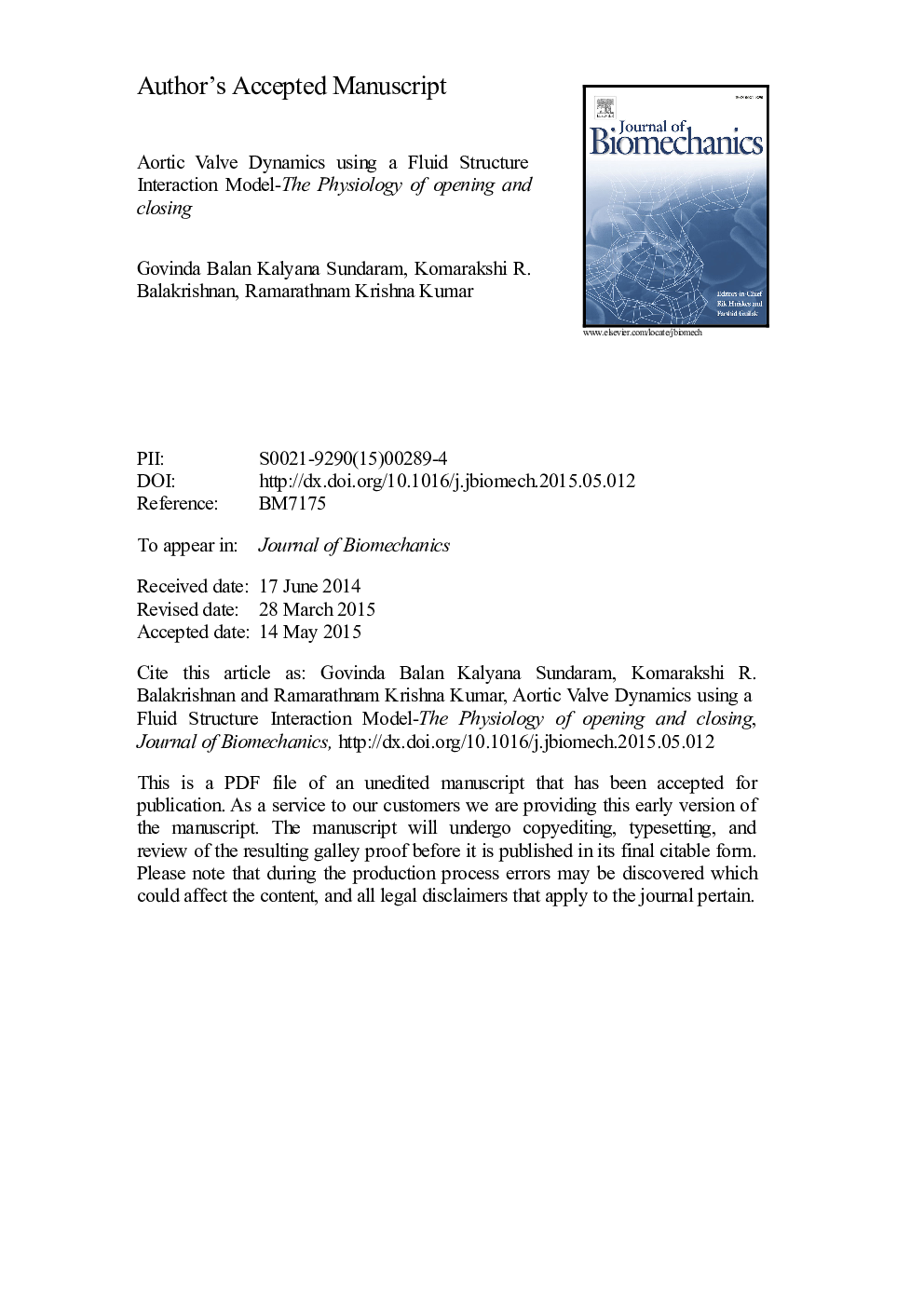| Article ID | Journal | Published Year | Pages | File Type |
|---|---|---|---|---|
| 10431381 | Journal of Biomechanics | 2015 | 30 Pages |
Abstract
Comparative study among aortic valves requires the use of an unbiased and relevant boundary condition. Pressure and flow boundary conditions used in literature are not sufficient for an unbiased analysis. We need a different boundary condition to analyze the valves in an unbiased, relevant environment. The proposed boundary condition is a combination of the pressure and flow boundary condition methods, which is chosen considering the demerits of the pressure and flow boundary conditions. In order to study the valve in its natural environment and to give a comparative analysis between different boundary conditions, a fluid-structure interaction analysis is made using the pressure and the proposed boundary conditions for a normal aortic valve. Commercial software LS-DYNA is used in all our analysis. The proposed boundary condition ensures a full opening of the valve with reduced valve regurgitation. It is found that for a very marginal raise in the ventricular pressure caused by pumping a fixed stroke volume, the cardiac output is considerably raised. The mechanics of the valve is similar between these two boundary conditions, however we observe that the importance of the root to raise the cardiac output may be overstated, considering the importance of the fully open nodule of arantius. Our proposed boundary condition delivers all the insights offered by the pressure and flow boundary conditions, along with providing an unbiased framework for the analysis of different valves and hence, more suitable for comparative analysis.
Related Topics
Physical Sciences and Engineering
Engineering
Biomedical Engineering
Authors
Govinda Balan Kalyana Sundaram, Komarakshi R. Balakrishnan, Ramarathnam Krishna Kumar,
